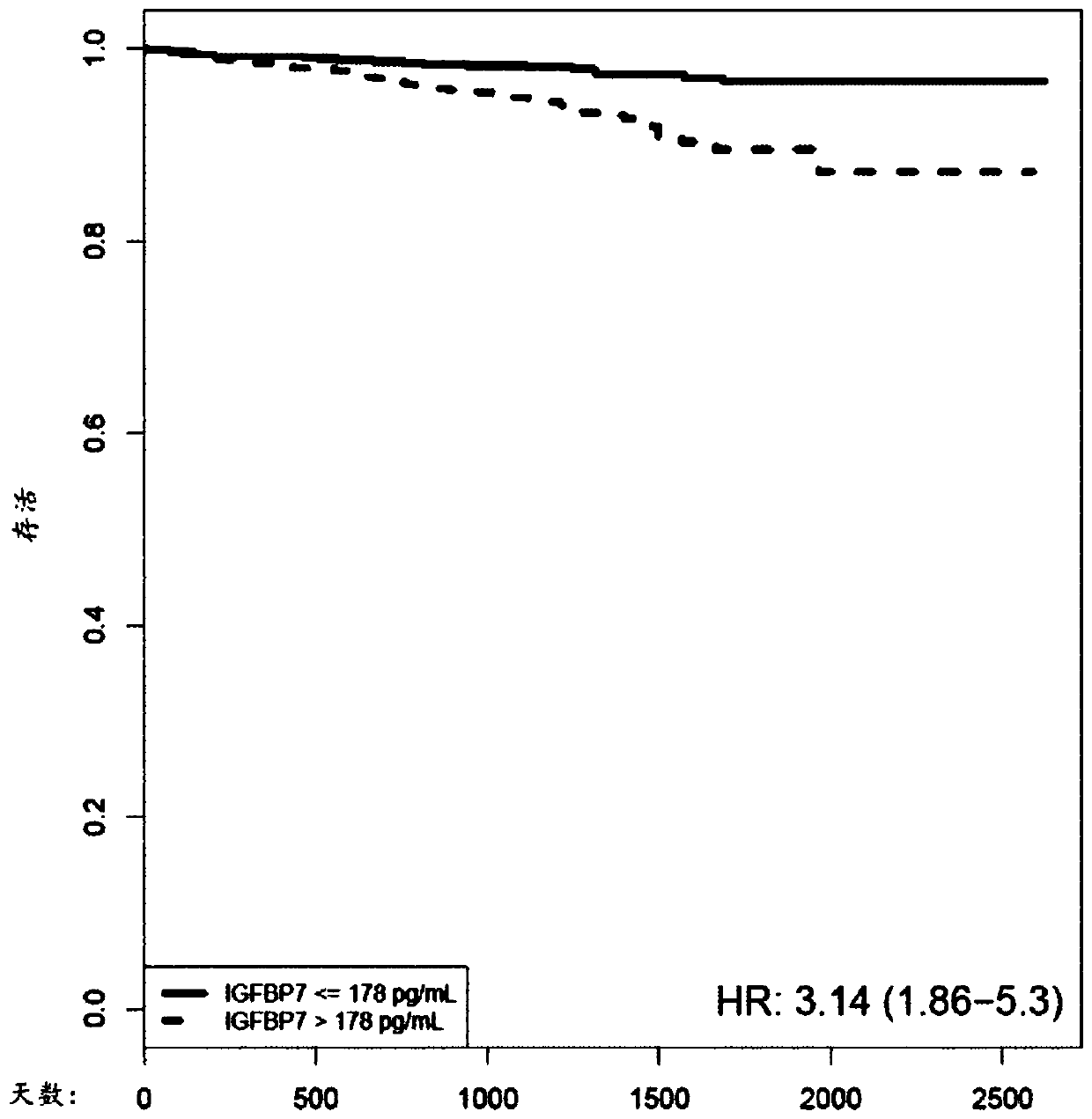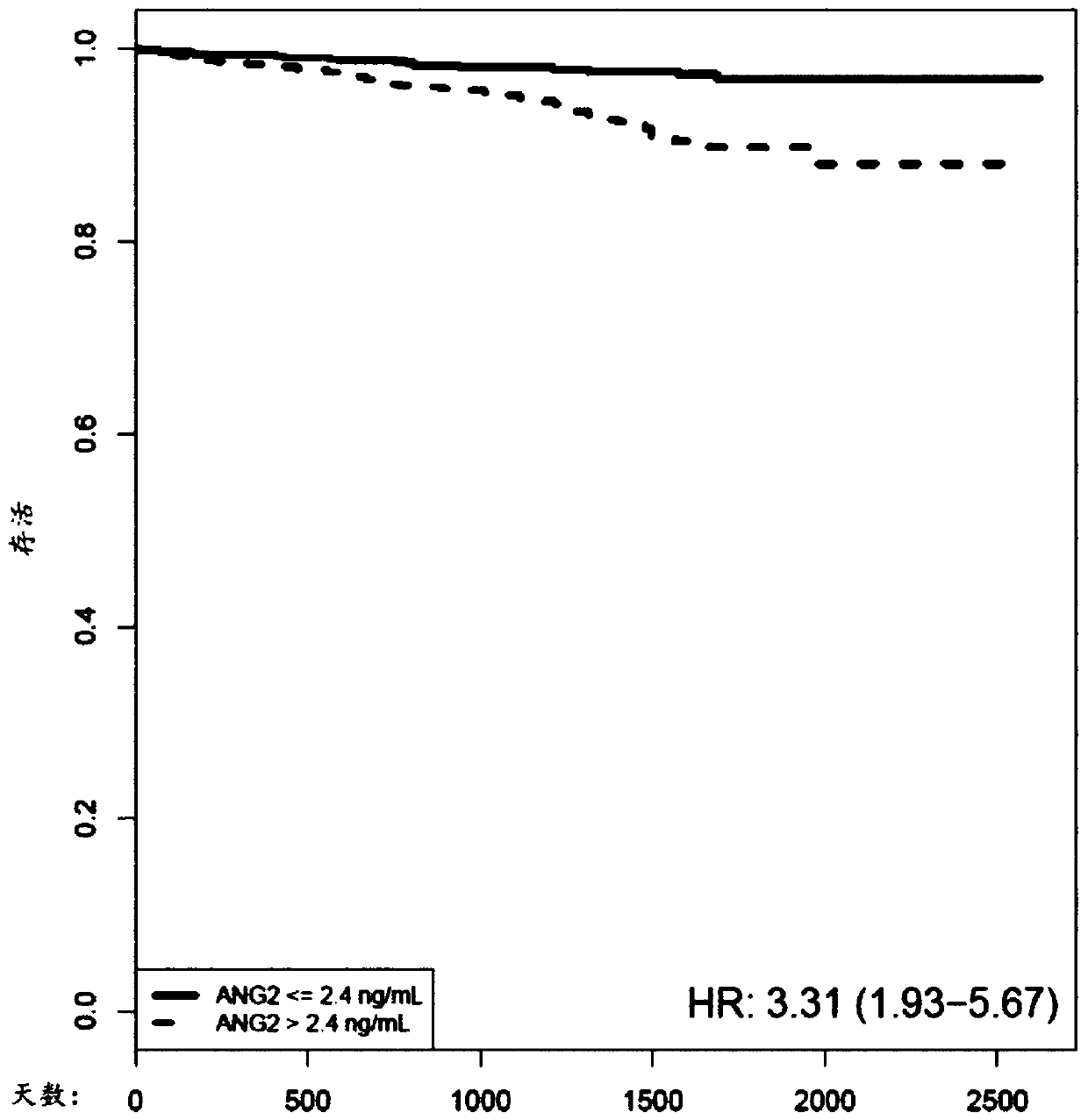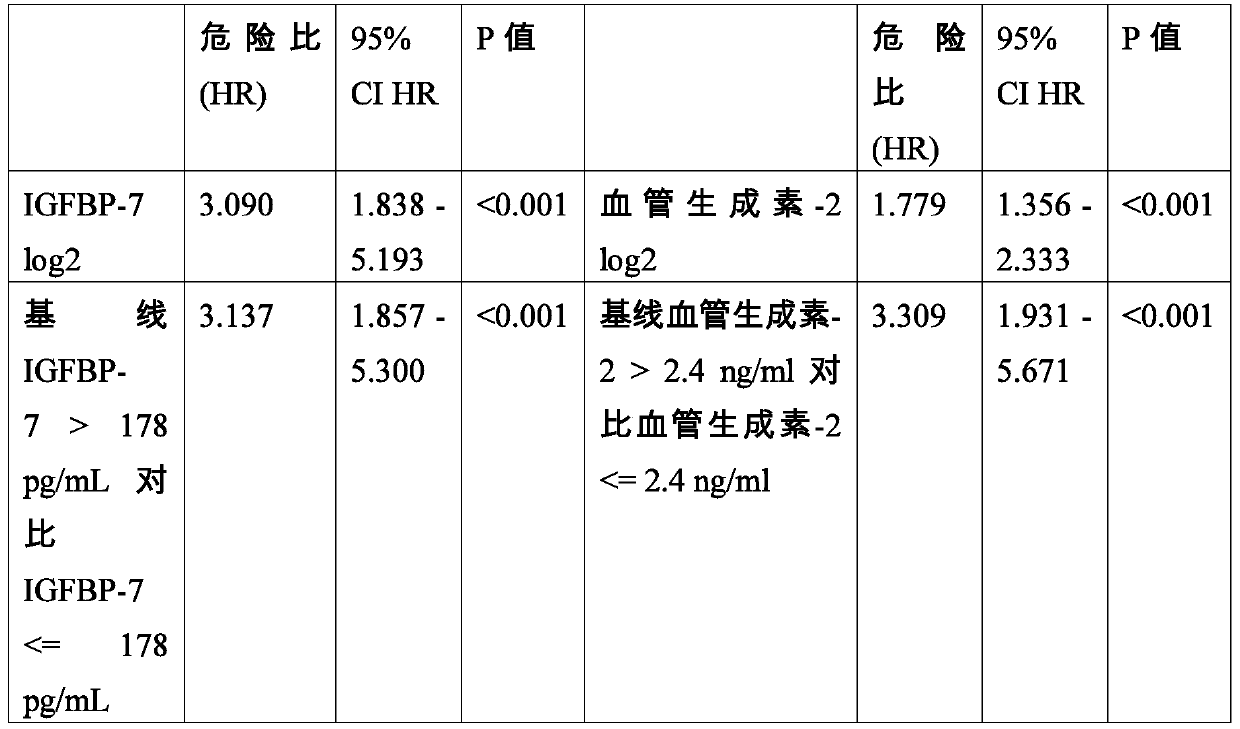Circulating angiopoietin-2 (ang-2) and insulin-like growth factor-binding protein 7 (igfbp7) for the prediction of stroke
A growth factor, insulin-like technology for improving the accuracy of clinical stroke risk score prediction
- Summary
- Abstract
- Description
- Claims
- Application Information
AI Technical Summary
Problems solved by technology
Method used
Image
Examples
example 1
[0200] The ability of circulating IGFBP-7 and circulating Ang-2 to predict stroke risk was assessed in a prospective multicenter registry of patients with documented atrial fibrillation (Conen D., Forum Med Suisse 2012; 12:860-862; Blum S .(J Am Heart Assoc. 2017;6:e005401. DOI: 10.1161 / JAHA.116.005401).
[0201] The Beat AF cohort included baseline plasma samples from 1553 patients who were followed for 7 years. The average age of females was 70+ / -11 years and the average age of males was 67+ / -12 years. The primary end point was stroke or systemic embolism. Seventy patients experienced a stroke during the follow-up period, most of which occurred within 3 years. Between 2010 and 2014, a total of 1553 documented AF patients were registered at 7 centers in Switzerland. At that time, the treatment was only changed from vitamin K antagonists to oral anticoagulation, and about 70% of the selected patients received oral anticoagulation, and some patients still received vitamin an...
PUM
 Login to View More
Login to View More Abstract
Description
Claims
Application Information
 Login to View More
Login to View More - R&D
- Intellectual Property
- Life Sciences
- Materials
- Tech Scout
- Unparalleled Data Quality
- Higher Quality Content
- 60% Fewer Hallucinations
Browse by: Latest US Patents, China's latest patents, Technical Efficacy Thesaurus, Application Domain, Technology Topic, Popular Technical Reports.
© 2025 PatSnap. All rights reserved.Legal|Privacy policy|Modern Slavery Act Transparency Statement|Sitemap|About US| Contact US: help@patsnap.com



